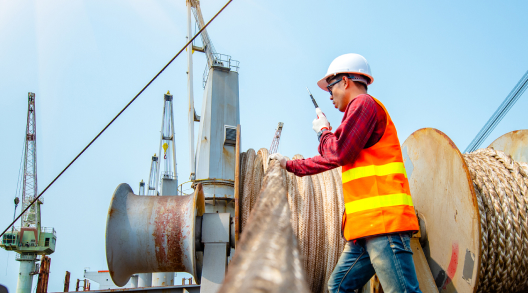
Maintaining integrity and achieving high operating standards has been made more important than ever during the COVID-19 pandemic, in this article, Luke Fisher, DryBMS project lead explains why it’s not the only test that our industry faces.
While COVID-19 has been a central focus for the maritime industry, and a major hurdle for us to overcome, the last decade has been full of moments that have increasingly demanded that we evolve our attitudes to performance beyond the minimum expectations.
The world is placing greater emphasis on shipping’s global impact in every respect. No longer an invisible force, shipping is in the spotlight, and we all must collaborate to ensure that standards across the board reflect the best of what our market can be.
Encouraging progress on safety continues to be made and should be celebrated. Last year’s State of Maritime Safety report shows that total loss incidents have continued to decline over the last five years. This is a clear demonstration that our sector has been making some progress in improving standards. It is this momentum that we must build on and accelerate to help us face the long-term challenges.
In the dry bulk sector, we now accept that vessels are safer than they were a decade ago, with more owners paying attention to safety and the development of a robust regulatory framework. However, we still have more to do. Every incident, no matter the severity, reinforces the need to maintain extremely high safety and operational standards.
We must now embrace progressive thinking, work together and build on our achievements to create an industry that is proud to advance the improvements needed in safety and welfare.
Collaboration helps us to overcome challenges
At the core of this is the creation of new tools, new mindsets and new cultures. In particular, collaboration will be vital as we all work together to bring about a safer dry bulk sector. This is a passionate belief that drove the creation of the DryBMS; a set of standards to help provide benchmarking and a route to improvement for owners and operators of any sized fleet within our market.
The initial collaborative effort behind DryBMS was the convening of like-minded owners, operators and managers within the dry bulk sector who had a common passion for the potential of operating beyond base compliance.
One consistent theme behind the creation of this standard was the concept of self-assessment. beneficial experience and learnings to be gleaned from other sectors, and particularly for operators with mixed fleets, where differences were visible.
The tanker sector’s links to the oil industry has led to the development of some of the most robust standards across all of shipping. Tanker operators and their community identified the risks inherent to their cargo and consequently developed the Tanker Management and Self-Assessment (TMSA) programme. TMSA allows owners to scrutinise their processes, systems and operations, and set themselves up correctly to operate far beyond base compliance.
This self-assessment framework is clearly a meaningful way of driving change. The aspiration to create a parallel environment for improvement for dry bulk – and, vitally, one that was designed by and invokes passions for improved standards amongst dry bulk leaders – was the major inspiration for the creation of DryBMS.
There is a simple reason why the self-assessment approach works; no-one knows the detail of day-to-day operations better than crew, owners and managers. Additionally, as the self-assessment approach requires analysis at input at every level, dynamic collaborative networks can be fostered as staff and crew feel more invested in the solution of elevating safety standards.
A new means to raise dry bulk safety
DryBMS was launched in draft form for open industry consultation in early 2020. It is laid out as a framework of 30 areas of management practice within four sections: performance, people, plant and process. This structure has been developed to help owners, operators and managers assess the scope for improvement in every aspect of a fleet’s day-to-day operations.
Amidst all of this, DryBMS also goes a long way to help the sector understand that a strong safety culture can be very powerful in generating meaningful safety improvements. A strong safety culture arises when the onboard systems, processes and operations are scrutinised and assessed beyond the minimum that has been set by the regulations and permeate across every mindset in the organisation and wider sector.
A culture of safety is truly developed when standards are taken into account from the very top. That’s why we recommend that DryBMS should be understood and implemented from the highest levels of an organisation. This ‘top-down’ approach, alongside the methodology of the DryBMS, ensures a truly shared journey within an organisation; the first step to creating shared journeys with other organisations in the sector.
Since the draft’s launch, we have heard feedback from across the dry bulk segment spanning owners, operators and managers, class societies, port state controls and regulatory bodies. This wide-ranging engagement will be pivotal in creating the means for genuine and continuous safety improvement in a way that works for all players within dry bulk.
Given the extra scrutiny being placed on our sector, we believe that this improvement is necessary. We must embrace these new challenges facing our market and use this opportunity to drive lasting mindset changes. Collaboration should be at the heart of a modern dry bulk sector, as we strive to improve widespread standards for crews, shoreside staff, customers and vessels alike.


